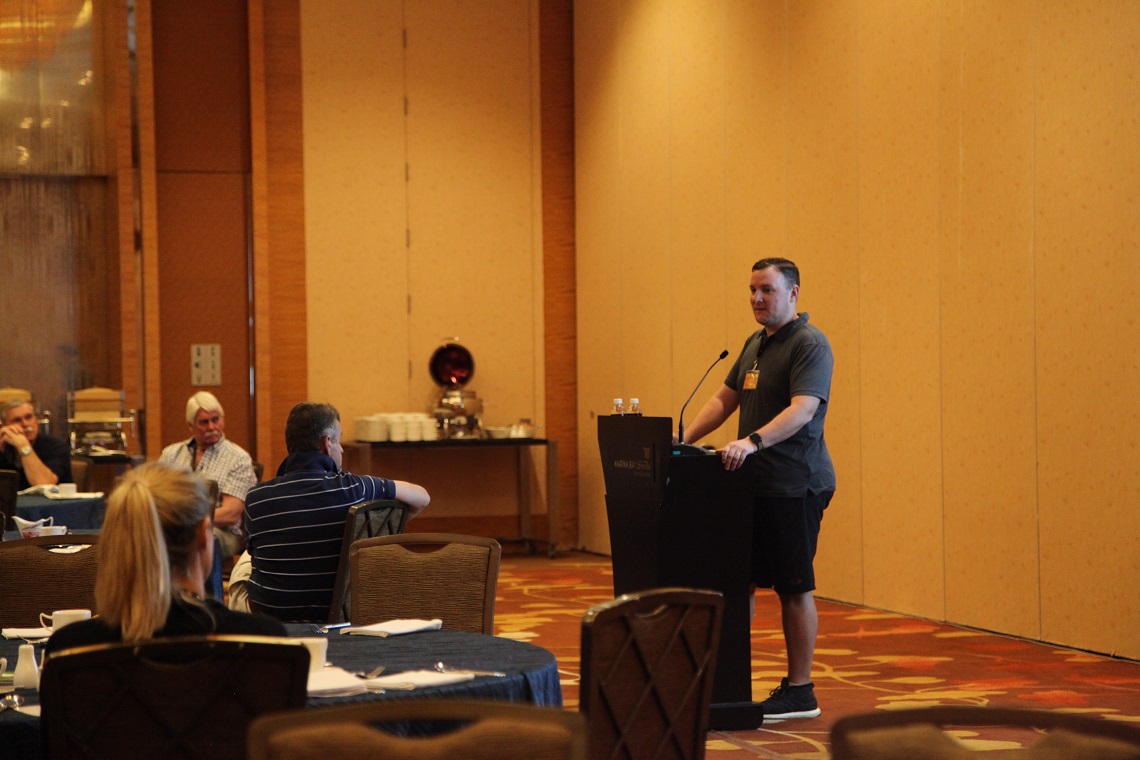By Deborah Jackson, Editor National Liquor News
The digital age has shaken up the way consumers are making purchasing decisions. Speaking at the 2018 ILG Conference in Singapore, Luke Van Staveren from Pernod Ricard Australia looked at the power of digital and identified some key consumer opportunities.
Van Staveren pointed to the frequency of internet use in Australia. He said that 56 per cent of people use the internet more than five times a day and 84 per cent of Australians access the internet daily.
Looking specifically at retail, he said that 82 per cent of consumers look up information about a product or brand while they’re in-store and 52 per cent of in-store purchases are driven by digital content.
“Therefore, at Pernod Ricard we want to equip shoppers with premium content and engage with your shoppers,” Van Staveren told the 100 delegates in attendance.
“In Australia, bricks-and-mortar retailers who are venturing to online have a greater trust versus pure online retailers, so obviously the bricks-and-mortar are important, as is digital.
“Sixty-three per cent of people compared prices from a competitor retailer while they were in a store, so they’re online searching, even though they’re physically in-store.
“All the traditions, the rules and conventions of the traditional past are being changed.”
Knowledge is power
“With the greater access to information and networks, consumers have more choices and higher demands. We’ve moved from the passive to being empowered consumers, particularly fuelled by transparency of social media and review sites.
“For Pernod, we’ve had a massive increase in our electronic data transactions. We want to know more about what’s happening with our consumers.”
Van Staveren identified seven key consumer opportunities: it’s better for me, human authenticity, shaking the codes, power for the consumer, easy at home and everywhere, doing good for the environment and the feminine identity.
The visual consumer
Van Staveran pointed to the fact that nearly 60 per cent of digital impressions are driven by images and more than five billion emoji’s are sent every day through messenger apps. So this is a rapidly evolving landscape that will continue to challenge brands to creatively engage with consumers.
“Now, as part of your everyday options, e-commerce is going to triple its share in global retail marketing expenditure in the next three years, and that’s massive. We’re looking at ways to interact with the customer. That’s the on-demand type of mediums, where people can go online and purchase things any time of the day and interact with brands.”
Where to next?
“Our consumers need online inspiration. Shopper behaviour has changed. There has been some market disruption and Amazon is definitely one that comes to mind in that area. And convenience and speed is key, so things like click-and-collect, on demand, deliveries within smaller timeframes is what consumers are demanding.
“To capitalise on these we need strategies of how we go to market and how we present our brands. The approach towards digital, obviously from a retail point of view and even from an on-premise perspective, supplier engagement and amplification of in-store activity is definitely a must. So definitely things like leveraged promotional programs that the commercial team, the marketing and trade teams put together.
“Lead generation. Gaining that data capture is quite important and making consumers or shoppers your ongoing supporters.
“Conversion. Having content to drive the sale is what’s key with data at the end of the day and having the content that’s relevant to the message of the brand that’s being presented, and being able to search for that information is critical.”
Van Staveren gave an example of a promotion that was run by Pernod Ricard for Absolut Botanic.
“When we launched Absolut Botanic we had a $20 cashback that was communicated in-store through POS. It was also communicated through our social media platforms where people could sign up and then go into store and redeem that way. It’s a great vehicle for driving trials of NPD and innovation that you have in-store, it’s definitely a great way for people to try and get that conversion of a sale.”
So with consumers in need of so much online inspiration and with these changes in shopper behaviour it’s more important than ever for retailers to be engaged with digital. His advice is for them to work with suppliers to source content to use within their own digital platforms.
“Just basically use whatever you’ve got on hand. I’m sure all the suppliers in the room would say that they’ve got plenty of content that you guys can use within stores to generate that lead activity and generate brand awareness, and the shoppers to have that consumer experience. It doesn’t have to be perfect but at least if you’re making it relevant is the key.”

